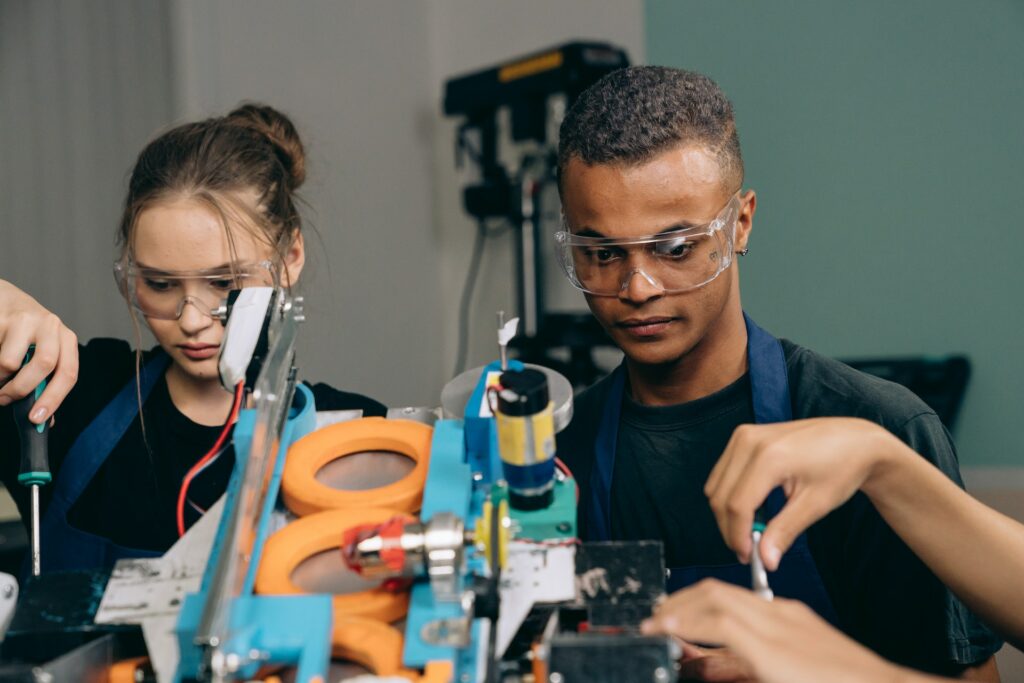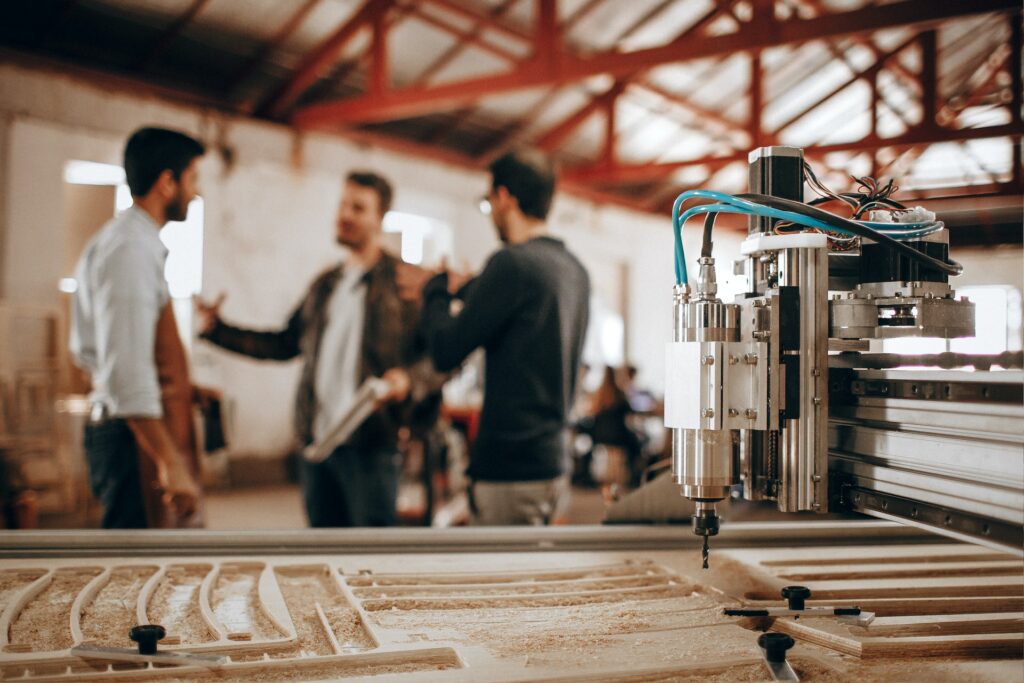Noru Razak
MECHATRONICS IN MANUFACTURING
Mechatronics in Manufacturing
- Khalid Chew
- November 10, 2022
- 4:27 am
- No Comments
In the era of globalization, where technology is advancing, entrepreneurs use technology to fulfil their dream of building a successful business that will significantly boost their fortune. Industry 4.0, the term for the fourth industrial revolution, was initially introduced in Germany in 2011. A large-scale high-tech government initiative rocked the foundation and later changed the entire industrial cycle. Computers and automation are the defining features of this new era, giving rise to new terminologies in the industrial sector, such as smart automating, self-diagnosis, self-configuration, and self-optimization. The principles of artificial intelligence and machine learning are frequently used, for example, in robotic systems that are remotely connected to cloud servers over the internet to learn from their environment and be controlled with only the smallest amount of human intervention. Industry 4.0 transforms how businesses manufacture, innovate, and distribute their goods. Manufacturers are incorporating new technology, such as mechatronics, into their operations and production facilities. With the help of this technology, we can cut costs and increase the quality of the product. Advanced sensors, embedded software, and robotics are all featured in these “smart factories,” which collect and analyze data to help with decision-making. When operational data from enterprise resource planning, supply chain, customer service, and other business systems are connected with data from manufacturing processes, even greater value from previously segregated information is produced. Discrete and process manufacturing, as well as the oil and gas, mining, and other industrial sectors, can all benefit from the concepts and technologies of Industry 4.0.

Mechatronics is a technology that harmonizes mechanical and electronic technology to increase automation in production facilities. Mechatronics and other engineering technology sectors are closely related. Manufacturing relies heavily on mechatronics. Mechatronics is the synergistic fusion of mechanical engineering with electronics and electrical systems employing intelligent computer control to design and develop industrial products, processes, and operations that result in robust, affordable, more reliable, adaptable, and versatile products. Since the Japanese engineer introduced mechatronic systems in 1969, they have significantly improved. Information technology is embodied by the prefix “Mecha,” which represents mechanical, and the suffix “Tronics,” which stands for electronics. The ability to forecast and prevent downtime and maximize equipment effectiveness and maintenance is the primary factor driving productivity increase in a smart factory. Employee efficiency can also be increased with the use of mechatronic technologies.
The sensors provide information about how many products have been produced, how many are flawed, and how long it took to make them. Whether contact or noncontact, sensors consist of a mechanical part that at least supports and positions the sensor and conveys the presence, absence, or intensity of the phenomenon being monitored. Each can be created as a sensory island, containing all the components required to perform its function and acting as an interface for integrating mechanical, electrical, and informational components into the larger system. As a result of competitiveness and growing market demand for higher-quality items, manufacturers are constantly releasing upgraded or new products to meet consumer demands. Automating product assembling and manufacturing has become important for manufacturers to accomplish it. Developing three-dimensional models is made simpler using computer-aided design and engineering tools. Numerical tools are then used to run and evaluate these models to record the results.

This gives designers in the early phases of product development knowledge about the performance of comparable goods. Design evaluation was regularly carried out following the first production in conventional design manufacturing processes. This took a lot of time and caused the development of the product to be delayed. However, producers can reduce time by utilizing computer-aided design and engineering tools. The creation of final designs sent to the product processing and planning department is assisted by the use of computer-aided design and computer-aided engineering tools, as well as mechatronics-based systems like computer-aided manufacturing, which includes features like automatic part programming, automatic process planning, and manufacturing resource planning. This helps in planning numerous tasks that will result in the accomplishment of production goals in both quantity and quality within the allotted period.
The use of mechatronics in advanced manufacturing has various functions. For instance, mechatronics is time-saving compared to a system with several technical concepts isolated from one another. An integrated manufacturing line is significantly faster. It is far faster to photograph, sort, measure, and record products as they move along a conveyor belt than at different times and places. Other than that, mechatronics also increases output, and a quick system translates into a good increase in production capacity. Manufacturing large quantities of goods has become simple because of mechatronics. Mechatronics is more cost effective when employing an automated production line means using less labour overall. Savings on labour expenses result from this. In addition, human error can cost a business a fortune, but with the use of an automated system operates more accurately and efficiently with fewer technical and input errors.
Applications of mechatronics in advanced manufacturing. Automation of production lines can be achieved with mechatronics. A manufacturing system is built up as a series of steps that build on one another. The majority of these systems move products and materials throughout the process using belts. By adding components like barcode readers, image, and sound processors along the way, mechatronics enables automation of the process. For instance, while a packaged item is moving along the conveyor belt, the production and expiration dates can be stamped in and recorded. A manufacturing process is successful only when the finished goods have the proper dimensions, weight, and quality. A big part of guaranteeing that is installing intelligent sensors and testing and configuring systems at the necessary parts. Mechatronics is the field in which all of this belongs. Besides that, every efficient production line needs safeguards to ensure the installation is working at its full potential. Dealing with elements like pressure and temperature becomes a priority as a result. This is made relatively simple by mechatronics, which uses sensors and reaction mechanisms to monitor and preserve the optimal operating parameters. For instance, a sensor may signal the cooling system to switch on when the temperature rises to a given point.
In conclusion, there are pros and cons of mechatronics. Still, we can’t deny that all manufacturing processes are sped up thanks to automated mechatronics technologies, including quality control, record keeping, automatic packaging, and automatic delivery. The systems make sure that better-quality, dependable, and well-packed products are always available. I’m positive that mechatronics will have an improvement and gives benefit to all consumers.